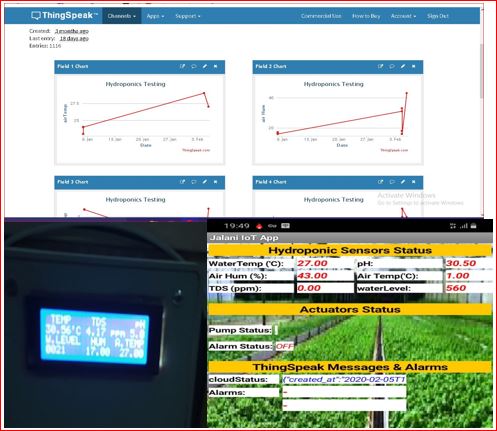Introduction
IoT with Blockchain for Supply Chain Transparency in a world where every product you buy has a complete, verifiable history from the raw materials to the store shelf. With the integration of the Internet of Things (IoT) and blockchain technology, that vision is becoming a reality. Supply chains are complex, involving multiple stakeholders, transactions, and data points. Ensuring transparency, security, and efficiency is a major challenge, but the convergence of IoT and blockchain presents a powerful solution.
Understanding IoT in Supply Chain Management
What is IoT?
The Internet of Things (IoT) refers to a network of interconnected devices that communicate and share data in real-time. These devices, embedded with sensors and software, collect and transmit valuable information across different environments.

How IoT Transforms Supply Chains
IoT devices enhance supply chain visibility by:
- Tracking goods in real time using GPS and RFID sensors.
- Monitoring environmental conditions such as temperature, humidity, and pressure.
- Predicting maintenance needs in manufacturing and logistics equipment.
- Automating inventory management to reduce errors and inefficiencies.
Blockchain: The Backbone of Transparency
What is Blockchain?
Blockchain is a decentralized digital ledger that records transactions in an immutable, tamper-proof manner. Each transaction is added to a chain of blocks and distributed across multiple nodes, ensuring security and reliability.
Benefits of Blockchain in Supply Chains
Blockchain technology ensures:
- Immutability: Once recorded, data cannot be altered, reducing fraud.
- Decentralization: Eliminates the need for intermediaries.
- Transparency: Every stakeholder has access to a single, verified source of truth.
- Smart contracts: Automate processes such as payments and compliance verification.
The Power of IoT and Blockchain Integration
How IoT and Blockchain Work Together
IoT devices generate real-time data, while blockchain ensures that this data remains secure, immutable, and transparent. By combining both technologies, supply chains achieve a new level of reliability and accountability.
Benefits of IoT-Blockchain Integration
- End-to-end visibility: Real-time tracking and verifiable records for all transactions.
- Enhanced security: Blockchain prevents unauthorized data modifications.
- Automated compliance: Smart contracts enforce regulatory requirements.
- Reduced fraud and counterfeiting: Verified data minimizes risks of tampering.
Use Cases of IoT and Blockchain in Supply Chain Transparency
1. Food Supply Chain
IoT sensors monitor temperature and storage conditions during transportation. Blockchain records every step of the journey, ensuring food safety and authenticity.
2. Pharmaceutical Supply Chain
With IoT tracking, companies ensure medicines are stored at optimal conditions. Blockchain guarantees the legitimacy of drugs, reducing counterfeit risks.
3. Luxury Goods and Antiques
High-value items like diamonds and artwork can be traced using IoT-enabled QR codes and RFID tags. Blockchain stores provenance records, preventing forgeries.
4. Automotive Industry
From sourcing raw materials to delivering finished vehicles, blockchain ensures ethical sourcing, while IoT tracks shipments in real time.
5. Logistics and Freight Management
IoT devices monitor cargo conditions, and blockchain ensures that records of handovers and transport conditions are tamper-proof.
The Lost City of Ubar: The Roman Republic’s Struggle with Corruption
Challenges in Implementing IoT-Blockchain Integration
1. Scalability Issues
Handling massive amounts of IoT-generated data on a blockchain network requires efficient scaling solutions.
2. High Implementation Costs
Adopting IoT and blockchain requires significant investment in infrastructure and expertise.
3. Interoperability Concerns
Ensuring different IoT devices and blockchain networks communicate seamlessly is a key challenge.
4. Data Privacy and Security
While blockchain enhances security, handling sensitive data on a public ledger raises privacy concerns.
Overcoming Challenges: Best Practices
1. Leveraging Hybrid Blockchain Models
Combining private and public blockchains ensures both transparency and confidentiality.
2. Using Edge Computing for IoT
Processing IoT data closer to its source reduces latency and bandwidth issues.
3. Implementing Standardized Protocols
Ensuring IoT devices follow universal standards improves interoperability.
4. Investing in Cybersecurity Measures
Encryption, multi-factor authentication, and zero-trust architectures enhance data security.
Future of IoT and Blockchain in Supply Chains
1. AI-Powered Predictive Analytics
AI will further optimize IoT-blockchain networks by predicting demand, detecting anomalies, and enhancing decision-making.
2. Global Adoption and Regulations
Governments and industries are increasingly recognizing the potential of IoT and blockchain, leading to standardization and policy development.
3. Mass Adoption of Digital Twins
Virtual models of supply chains (digital twins) will enhance simulation, monitoring, and forecasting.
4. Integration with 5G and Edge Computing
Faster data processing and improved connectivity will boost IoT-blockchain efficiency.
Conclusion
The integration of IoT with blockchain is revolutionizing supply chain transparency. By providing real-time tracking, secure data storage, and automation through smart contracts, businesses can ensure ethical sourcing, reduce fraud, and enhance efficiency. Although challenges exist, continuous advancements in technology and strategic implementation will drive widespread adoption, shaping the future of global supply chains.
IoT-Enhanced Beekeeping: Monitoring Pollination Rates in Agriculture
FAQs
1. How does IoT improve supply chain transparency?
IoT enables real-time tracking of goods, monitors environmental conditions, and automates inventory management, ensuring transparency.
2. Can blockchain completely eliminate fraud in supply chains?
While blockchain significantly reduces fraud by providing immutable records, human errors and external threats must still be addressed.
3. Is integrating IoT and blockchain expensive?
Yes, the initial investment can be high, but long-term benefits like cost savings, efficiency, and security outweigh the costs.
4. How does blockchain ensure data integrity in supply chains?
Blockchain records transactions immutably, preventing unauthorized alterations and ensuring a reliable data trail.
5. What industries benefit the most from IoT-blockchain integration?
Industries like food, pharmaceuticals, logistics, luxury goods, and automotive gain the most from improved tracking and transparency.


